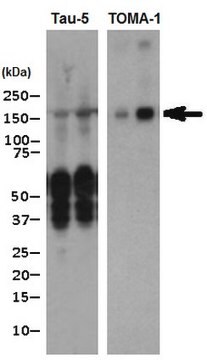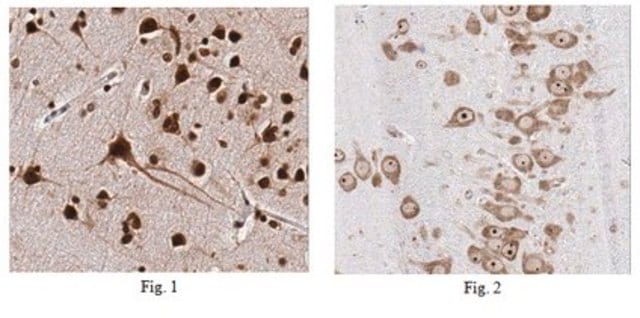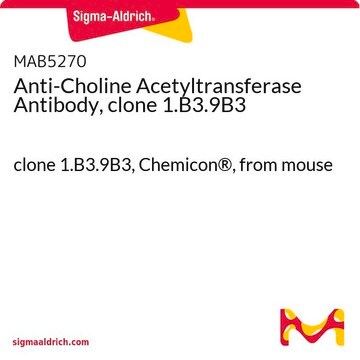MABE121
Anti-SMARCA4 Antibody, clone 20C3.2
clone 20C3.2, from mouse
Synonym(s):
Transcription activator BRG1, ATP-dependent helicase SMARCA4, BRG1-associated factor 190A, BAF190A, Mitotic growth and transcription activator, Protein BRG-1, Protein brahma homolog 1, SNF2-beta, SWI/SNF-related matrix-associated actin-dependent regulato
About This Item
Recommended Products
biological source
mouse
Quality Level
antibody form
purified immunoglobulin
antibody product type
primary antibodies
clone
20C3.2, monoclonal
species reactivity
rat, human
technique(s)
immunocytochemistry: suitable
western blot: suitable
isotype
IgG1κ
NCBI accession no.
UniProt accession no.
shipped in
wet ice
target post-translational modification
unmodified
Gene Information
human ... SMARCA4(6597)
General description
Immunogen
Application
Epigenetics & Nuclear Function
Chromatin Biology
Immunocytochemistry Analysis: 1 µg/mL of this antibody detected SMARCA4 in HeLa and A431 cells.
Quality
Western Blot Analysis: 0.5 µg/mL of this antibody detected SMARCA4 in 10 µg of HeLa nuclear extract.
Target description
Physical form
Storage and Stability
Analysis Note
HeLa nuclear extract
Other Notes
Disclaimer
Not finding the right product?
Try our Product Selector Tool.
recommended
Storage Class
12 - Non Combustible Liquids
wgk_germany
WGK 1
flash_point_f
Not applicable
flash_point_c
Not applicable
Certificates of Analysis (COA)
Search for Certificates of Analysis (COA) by entering the products Lot/Batch Number. Lot and Batch Numbers can be found on a product’s label following the words ‘Lot’ or ‘Batch’.
Already Own This Product?
Find documentation for the products that you have recently purchased in the Document Library.
Our team of scientists has experience in all areas of research including Life Science, Material Science, Chemical Synthesis, Chromatography, Analytical and many others.
Contact Technical Service








